Stronger Passions of the Mind
![[Mary Robinson]](images/sqthumb/ps_cps_cd3_046.jpg) [Mary Robinson]
[Mary Robinson]
NYPL,
Pforzheimer
Collection
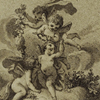 Angelica’s Ladies
Angelica’s Ladies
Library…
NYPL,
Pforzheimer
Collection
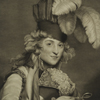 Mrs. Jordan
in the
Mrs. Jordan
in the
Character
of Hypolita
NYPL,
Print
Collection
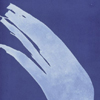 Photographs of
Photographs of
British Algae
NYPL,
Spencer
Collection
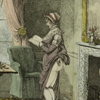 Comfort
Comfort
NYPL,
Pforzheimer
Collection
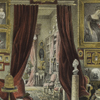 Passages from
Passages from
My Autobiography
NYPL,
Pforzheimer
Collection
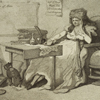 I’ll Tell You What!
I’ll Tell You What!
NYPL, Print Collection
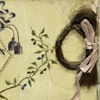 Friendship Album
Friendship Album
NYPL,
Pforzheimer
Collection
The continuing spread of the print revolution that began with
Gutenberg made the Romantic period an enormously fruitful time
for readers, writers, and even visual artists. Growing numbers
of readers supported growing numbers of books, newspapers, prints,
and journals. The figure of the author gained a new glamour and
mystique. Circulating libraries made books widely available, and
reading aloud was a favorite pastime.
Women took up authorship for the sake of fame and artistic glory,
but for practical reasons too: writing required no formal education
beyond a knowledge of the genres, and no tools beyond paper and
ink. Books could be published anonymously, and written from home.
Thus, some of the legal obstacles that women endured—they
were barred from universities and most jobs—could be evaded
by working with a pen. New genres, such as the annuals—pretty,
highly illustrated gift books—and the increasing number
of works for children provided outlets for women’s writing.
But above all, women wrote novels, a wildly popular genre; they
produced everything from trash to masterpieces. However, it was
poetry that brought the greatest critical esteem, and women like
Felicia Hemans competed with Lord Byron in sales.
The visual arts were not so profitable for women, since oil painting
required professional training and unladylike self-promotion.
But all genteel girls learned to draw, and some, such as Lady
Diana Beauclerk, did forge professional careers. Others, like
Anna Atkins, an early photographer, brought extraordinary dedication
and skill to their amateur work.

![[Mary Robinson]](images/sqthumb/ps_cps_cd3_046.jpg)






